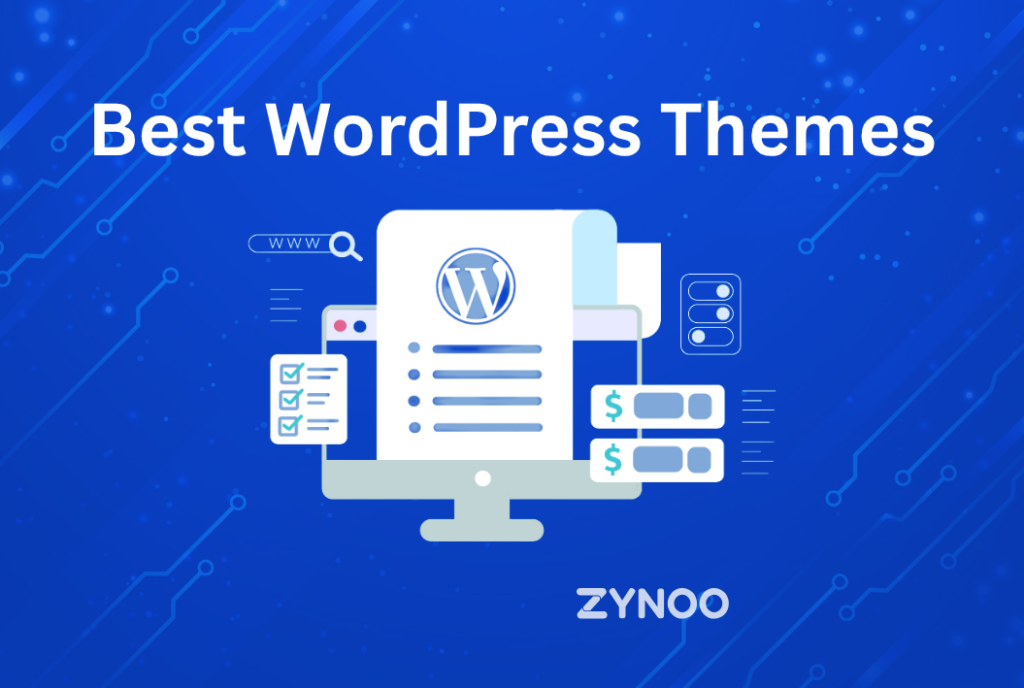Unlocking the full potential of a Content Delivery Network (CDN) can transform your website’s performance, making it faster, more reliable, and capable of handling higher traffic loads. In this comprehensive guide, we will explore ten powerful benefits of using a CDN and how it can significantly enhance your online presence.
Introduction
In the fast-paced digital landscape, website performance is critical. Slow load times and downtime can lead to a poor user experience, reduced engagement, and lower search engine rankings. A Content Delivery Network (CDN) is a strategic solution designed to mitigate these issues by optimizing the delivery of content to users worldwide. Whether you run a small blog or a large e-commerce site, understanding the benefits of CDN can help you make an informed decision about implementing this technology to boost your website’s performance.
What is a CDN?
A CDN is a network of distributed servers strategically placed around the globe to deliver web content more efficiently to users. By caching and storing copies of your website’s static content, such as images, videos, and stylesheets, on multiple servers, a CDN ensures that users can access data from a server closest to their location. This minimizes latency and improves load times, providing a smoother and faster user experience.
Benefits of CDN
The impact of a CDN on website performance is profound. With servers located closer to end-users, data travels shorter distances, resulting in faster load times. This performance boost is particularly significant for websites with a global audience. CDNs also offer advanced features like load balancing, failover support, and DDoS protection, which contribute to enhanced website reliability and security.
1. Faster Load Times
One of the most significant benefits of CDN is the dramatic reduction in load times. When a user accesses your website, the content is delivered from the nearest server location, reducing latency and speeding up the loading process. This improvement is crucial for retaining visitors and improving their overall experience on your site.
2. Improved Reliability and Uptime
CDNs are designed to handle large amounts of traffic and provide failover support in case of server outages. By distributing content across multiple servers, a CDN ensures that your website remains accessible even during high-traffic periods or server failures. This increased reliability translates to better uptime and a more consistent user experience.
3. Enhanced Security
CDNs offer several security benefits, including protection against Distributed Denial of Service (DDoS) attacks, SSL/TLS encryption, and secure token authentication. These features help safeguard your website from malicious attacks and data breaches, ensuring the integrity and privacy of your user data.
4. Scalability
As your website grows, managing increased traffic can become challenging. CDNs provide the scalability needed to handle traffic spikes efficiently. By offloading the delivery of static content to CDN servers, your origin server can focus on dynamic content, improving overall performance and scalability.
5. SEO Benefits
Search engines prioritize websites with fast load times and reliable performance. By using a CDN, you can improve your website’s load speed, reduce bounce rates, and enhance user experience—all of which contribute to better SEO rankings. A faster, more reliable website is more likely to rank higher in search engine results, driving more organic traffic to your site.
6. Cost Efficiency
Implementing a CDN can be cost-effective, especially for websites with high traffic volumes. By reducing the load on your origin server and optimizing content delivery, a CDN can help lower bandwidth costs and reduce the need for expensive hardware upgrades. This cost efficiency allows you to allocate resources more effectively and invest in other areas of your business.
7. Global Reach
A CDN extends your website’s reach by delivering content to users worldwide. With servers located in multiple geographic regions, a CDN ensures that your content is accessible to a global audience with minimal latency. This global reach is particularly beneficial for businesses looking to expand their market presence and attract international customers.
8. Reduced Latency
Latency, the delay before a transfer of data begins following an instruction for its transfer, can significantly impact user experience. CDNs reduce latency by storing copies of your website’s content on servers closer to end-users. This proximity reduces the time it takes for data to travel, resulting in faster load times and a smoother user experience.
9. Better User Experience
A fast, reliable website is essential for providing a positive user experience. CDNs contribute to improved site performance, leading to higher user satisfaction and engagement. By ensuring that your website loads quickly and remains accessible, you can keep visitors on your site longer, reduce bounce rates, and increase the likelihood of conversions.
10. Competitive Advantage
In the highly competitive online market, having a fast and reliable website can give you an edge over competitors. By leveraging the benefits of CDN, you can ensure that your website performs optimally, providing a superior user experience that sets you apart from the competition. This competitive advantage can lead to higher customer satisfaction, increased sales, and stronger brand loyalty.
CDN Integration: Steps and Considerations
Integrating a CDN with your website involves several steps and considerations. First, you need to choose a CDN provider that meets your needs. Popular options include Cloudflare, Akamai, and Amazon CloudFront. Once you’ve selected a provider, you can configure your website to use the CDN by updating your DNS settings and modifying your content management system (CMS) or web server configuration.
It’s also important to consider the type of content you want to cache and deliver via the CDN. Static content such as images, videos, and stylesheets are ideal candidates for CDN caching. Dynamic content, which changes frequently, may require additional configuration to ensure it is delivered correctly.
Monitoring and Optimizing CDN Performance
After integrating a CDN, it’s essential to monitor and optimize its performance regularly. Most CDN providers offer analytics and reporting tools that allow you to track key metrics such as load times, cache hit ratios, and traffic patterns. By analyzing this data, you can identify areas for improvement and make necessary adjustments to enhance performance.
Additionally, optimizing your website’s content for CDN delivery can further improve performance. This optimization may include compressing images, minifying CSS and JavaScript files, and leveraging browser caching to reduce the load on CDN servers and improve load times.
CDN and Mobile Performance
With the increasing use of mobile devices to access the internet, ensuring optimal performance on mobile platforms is crucial. CDNs play a vital role in enhancing mobile performance by reducing latency and improving load times for mobile users. By delivering content from servers closer to mobile users, a CDN can help overcome the challenges associated with mobile connectivity and provide a seamless browsing experience.
Case Studies: Real-World Examples
Several high-profile websites have successfully implemented CDNs to improve their performance. For instance, Netflix uses a custom CDN, Open Connect, to deliver streaming content to millions of users worldwide. This implementation has significantly reduced latency and buffering times, providing a smoother streaming experience for viewers.
Similarly, e-commerce giant Amazon leverages its CDN, CloudFront, to deliver content quickly and reliably to customers around the globe. By using a CDN, Amazon has been able to handle high traffic volumes during peak shopping periods, ensuring a positive shopping experience for its customers.
Common CDN Challenges and Solutions
While CDNs offer numerous benefits, they also come with challenges that need to be addressed. One common challenge is the complexity of integration, particularly for large websites with extensive content. To overcome this, it’s essential to work closely with your CDN provider and leverage their expertise to ensure a smooth implementation.
Another challenge is managing dynamic content delivery. Unlike static content, dynamic content changes frequently and requires special handling to ensure it is delivered correctly. Implementing caching strategies and configuring your CDN to handle dynamic content can help mitigate this issue.
The Future of CDN Technology
The future of CDN technology looks promising, with advancements aimed at further enhancing performance, security, and scalability. Emerging trends include the integration of artificial intelligence (AI) and machine learning (ML) to optimize content delivery and improve user experience. Additionally, the adoption of edge computing, where data processing occurs closer to the user, is expected to revolutionize CDN technology, offering even faster load times and reduced latency.
How to Choose the Right CDN Provider
Selecting the right CDN provider is crucial to maximizing the benefits of CDN technology. Factors to consider include the provider’s network coverage, performance, security features, and pricing. It’s also important to evaluate the provider’s customer support and technical expertise to ensure they can meet your specific needs.
Popular CDN providers include Cloudflare, Akamai, Amazon CloudFront, and Fastly. Each provider offers unique features and capabilities, so it’s essential to conduct thorough research and select a provider that aligns with your business goals and requirements.
CDN Pricing Models
CDN pricing models vary depending on the provider and the specific services offered. Common pricing models include pay-as-you-go, where you pay based on the amount of data transferred, and subscription-based models that offer fixed monthly rates. It’s important to understand the pricing structure of your chosen provider and consider factors such as bandwidth usage, geographic coverage, and additional features when evaluating costs.
Setting Up a CDN: A Step-by-Step Guide
Setting up a CDN involves several steps, including selecting a provider, configuring your DNS settings, and updating your website’s content management system (CMS) or web server configuration. Here’s a step-by-step guide to help you
get started:
- Choose a CDN provider: Research and select a CDN provider that meets your needs.
- Sign up and configure your account: Create an account with the provider and configure your settings.
- Update DNS settings: Modify your DNS settings to point to the CDN’s servers.
- Configure your CMS or web server: Update your website’s CMS or web server configuration to use the CDN for content delivery.
- Test and monitor performance: Test your website’s performance and monitor key metrics to ensure optimal performance.
Optimizing Content for CDN Delivery
To maximize the benefits of CDN technology, it’s essential to optimize your website’s content for CDN delivery. This optimization includes compressing images, minifying CSS and JavaScript files, and leveraging browser caching. Additionally, implementing best practices for content delivery, such as using a content management system (CMS) that supports CDN integration, can further enhance performance.
FAQs
What is a CDN and how does it work?
A CDN is a network of distributed servers that deliver web content more efficiently by caching and storing copies of your website’s static content. This reduces latency and improves load times by delivering content from the nearest server location to the user.
How can a CDN improve website performance?
A CDN improves website performance by reducing load times, increasing reliability, and enhancing security. By delivering content from servers closer to users, a CDN minimizes latency and ensures a faster, more reliable browsing experience.
Are CDNs only beneficial for large websites?
No, CDNs are beneficial for websites of all sizes. While large websites with high traffic volumes may see the most significant improvements, smaller websites can also benefit from faster load times, improved reliability, and enhanced security.
How do CDNs enhance website security?
CDNs enhance website security by offering protection against DDoS attacks, SSL/TLS encryption, and secure token authentication. These features help safeguard your website from malicious attacks and data breaches.
What are some common challenges of using a CDN?
Common challenges of using a CDN include integration complexity, managing dynamic content delivery, and understanding pricing models. Working closely with your CDN provider and leveraging their expertise can help overcome these challenges.
How do I choose the right CDN provider for my website?
To choose the right CDN provider, consider factors such as network coverage, performance, security features, and pricing. Evaluate the provider’s customer support and technical expertise to ensure they can meet your specific needs.
Conclusion
Unlocking the powerful benefits of CDN can significantly enhance your website’s performance, providing faster load times, improved reliability, enhanced security, and better user experience. By understanding and leveraging these benefits, you can ensure that your website remains competitive in the ever-evolving digital landscape. Whether you run a small blog or a large e-commerce site, integrating a CDN is a strategic move that can drive growth, improve SEO rankings, and provide a superior browsing experience for your users.



